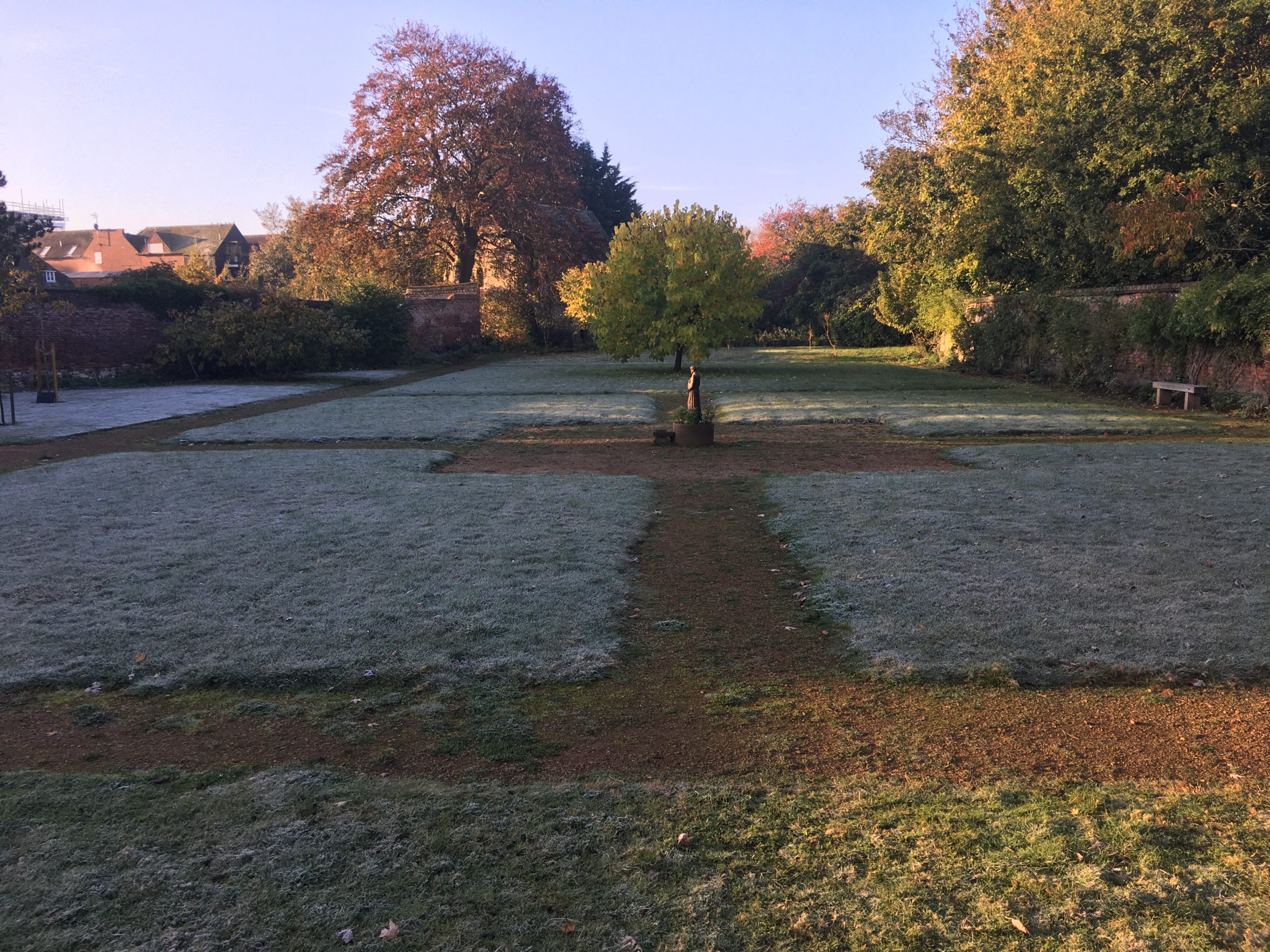This week saw the first frost of the season making the lawns in the Cloister Garth look as though they’d been liberally sprinkled with glitter.
There are plenty of jobs to keep gardeners busy at this time of year, and leaf sweeping is one that can seem like a thankless task.After a breezy weekend we spent nearly all of Monday morning raking and sweeping beech, sycamore, oak and maple leaves to clear all the pathways. Vast multicoloured quantities of them have been stored in large builders’ bags in the composting area and will gradually decompose over the next year or two to make precious a leafmould mulch. The leaves we stored last autumn have already reduced down to a friable, deep brown, sweet-smelling compost. Over this winter it will be broken down even more by frosts and invertebrates so that come spring we’ll be able to spread it over the borders to suppress weeds, feed the soil and retain moisture next summer. No doubt we’ll need to repeat the sweeping and raking next Monday morning, and for a few more times until all the leaves have dropped.
We prepared a border around Assisi Cottage’s garden fence, taking off the turf and digging over the ground. This is to be planted up with bare-root rosa rugosa and hornbeam which will grow to make a colourful, thick hedge within a few years. The honeysuckles that we planted along the fence back in spring have taken well and will gradually mingle with the roses to make an attractive, scented screen.
Bare-root beech saplings arrived to replace several which had died back along the entrance path. Beech hedging can be difficult to get established and there are a few patches where the competition from the invasive bamboo in the Master’s Lodge and the shade cast by the two large cherry trees has meant that the original beech failed. Hopefully the new saplings we have put in as replacements will have better luck, we’ll certainly be nurturing them over the winter and spring and ensuring they get plenty of water in the summer to give them the best chance to establish a good root system.
One of the more modern historical features in the garden was given some TLC this week. The WWII air raid shelter, tucked away in the shrubbery at the entrance to the meadow might not be as old as the Chapel or the Lovelace Wall but in it’s own right it is an important piece of social history. The corrugated iron roof would have been covered with a thick layer of earth and sandbags and more would have been piled up around the brick sides. The shelter itself is now filled up with earth and rubble, but in the war years it would have provided a small but safe space, half underground, for the families who lived in Assisi Cottage and the houses at this end of Stour Street. We carefully pulled and cut off much of the bramble and ivy that has overgrown the shelter to reveal more of the roof and the opening so that visitors can now see more clearly what it would have been like 80 years ago.

